A façon de Venise reverse-painted glass picture, circa 1570 Hall-in-Tyrol or Innsbruck, of upright rectangular form, painted with The Fall or The Temptation of Adam and Eve, after an engraving by Marcantonio Raimondi the nude figures standing beside trees, with Adam holding the Forbidden Fruit, the serpent disguised with the head of a woman, concealed among the leaves in the tree above Eve, beside further fruit, a detailed village or town in the background beneath a broad band of gold foil, visible area 24cm x 19.4cm (later framed) Fußnoten Provenance Frank Wyndham Sholto Douglas Murray from his house at 9 Stratton Street, London Probably inherited from his father, the antiquarian and Egyptologist Thomas Douglas Murray (1841-1911) Bruce Fearn Collection, purchased by his father in the 1950s from a house sale in Nottinghamshire This dynamic representation of The Temptation of Adam and Eve is taken from a design by Raphael for the Stanze in the Vatican commissioned in 1508-9. The direct source is likely to be a print after Raphael by Marcantonio Raimondi This engraving dates from the first quarter of the 16th century, probably circa 1512-14. The glass panel is a reversed or mirror image of the print, and of course this is to be expected as the glass was painted on the reverse of the glass panel. The painter of the glass picture copied the figures and trees from Raimondi's engraving but used much licence with details and the landscape background. The most significant difference is the addition of a vine and a leafy branch to hide the figures' nudity. The sale of the Wolfgang Meixner Collection by Bonhams on 3 November 2016, lots 23-25, featured three reverse painted panels attributed to Innsbruck or Hall-in-Tyrol. A related panel of the Descent from the Cross attributed to Hall-in-Tyrol is illustrated by Frieder Ryser, Reverse Paintings on Glass (1992), p.16, fig.7. Further 16th century panels are in the Corning Museum of Glass and the Museo Vetrario in Murano. Ryser discusses these so-called 'Venetian Panels' and suggests these, and other related reverse-painted dishes, originated in Hall-in-Tyrol. Unlike later glass pictures, these panels were individually cast or formed rather than cut from larger panes of glass, resulting in their irregular edges and uneven, striated surfaces.
A façon de Venise reverse-painted glass picture, circa 1570 Hall-in-Tyrol or Innsbruck, of upright rectangular form, painted with The Fall or The Temptation of Adam and Eve, after an engraving by Marcantonio Raimondi the nude figures standing beside trees, with Adam holding the Forbidden Fruit, the serpent disguised with the head of a woman, concealed among the leaves in the tree above Eve, beside further fruit, a detailed village or town in the background beneath a broad band of gold foil, visible area 24cm x 19.4cm (later framed) Fußnoten Provenance Frank Wyndham Sholto Douglas Murray from his house at 9 Stratton Street, London Probably inherited from his father, the antiquarian and Egyptologist Thomas Douglas Murray (1841-1911) Bruce Fearn Collection, purchased by his father in the 1950s from a house sale in Nottinghamshire This dynamic representation of The Temptation of Adam and Eve is taken from a design by Raphael for the Stanze in the Vatican commissioned in 1508-9. The direct source is likely to be a print after Raphael by Marcantonio Raimondi This engraving dates from the first quarter of the 16th century, probably circa 1512-14. The glass panel is a reversed or mirror image of the print, and of course this is to be expected as the glass was painted on the reverse of the glass panel. The painter of the glass picture copied the figures and trees from Raimondi's engraving but used much licence with details and the landscape background. The most significant difference is the addition of a vine and a leafy branch to hide the figures' nudity. The sale of the Wolfgang Meixner Collection by Bonhams on 3 November 2016, lots 23-25, featured three reverse painted panels attributed to Innsbruck or Hall-in-Tyrol. A related panel of the Descent from the Cross attributed to Hall-in-Tyrol is illustrated by Frieder Ryser, Reverse Paintings on Glass (1992), p.16, fig.7. Further 16th century panels are in the Corning Museum of Glass and the Museo Vetrario in Murano. Ryser discusses these so-called 'Venetian Panels' and suggests these, and other related reverse-painted dishes, originated in Hall-in-Tyrol. Unlike later glass pictures, these panels were individually cast or formed rather than cut from larger panes of glass, resulting in their irregular edges and uneven, striated surfaces.


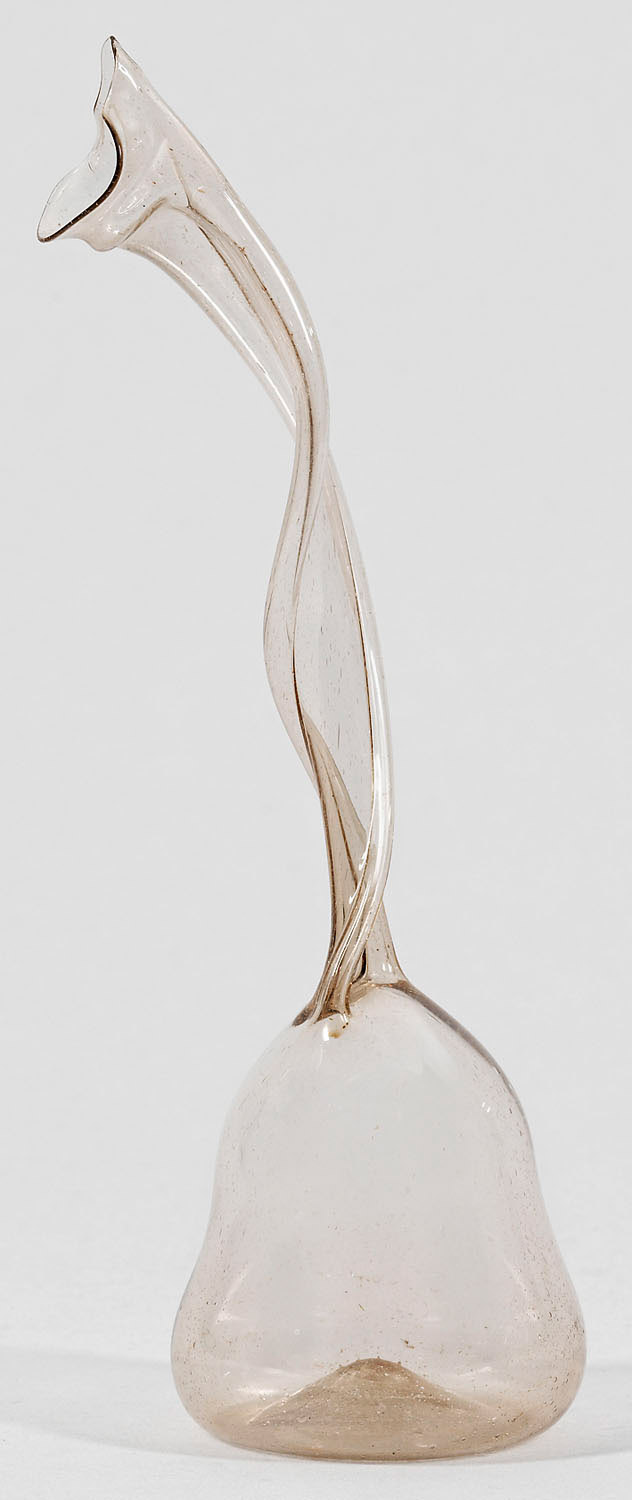


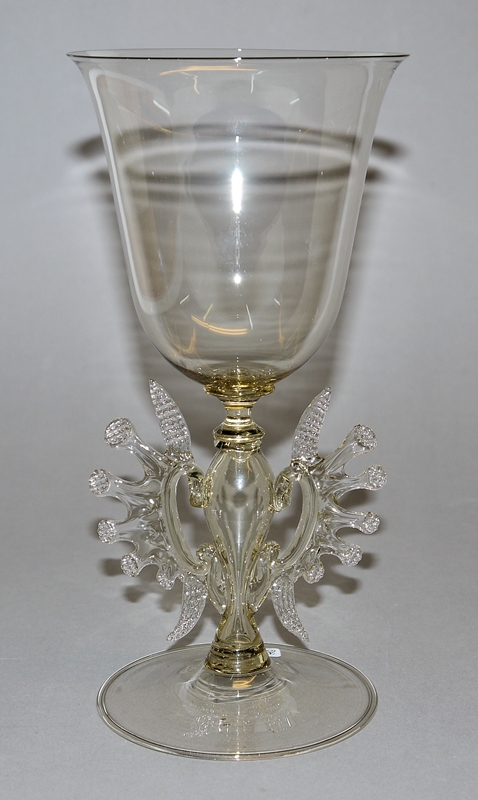

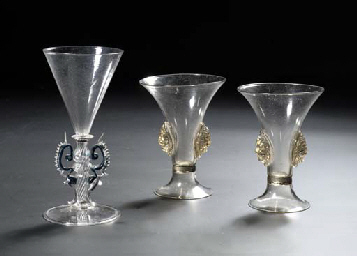
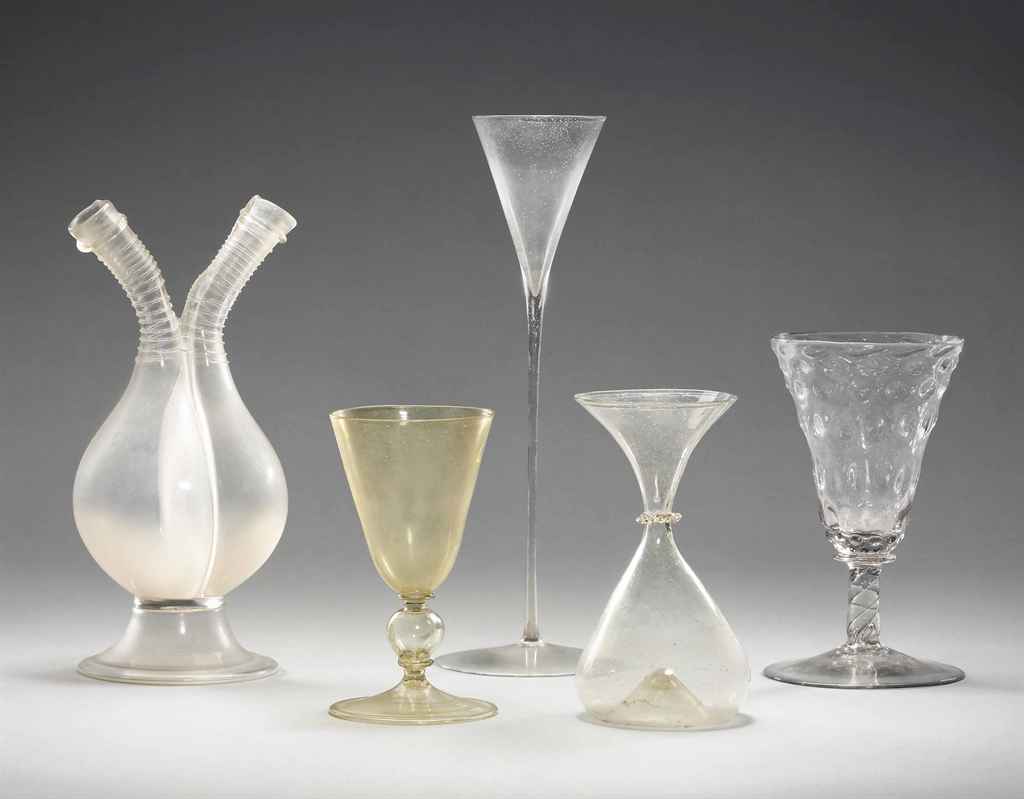

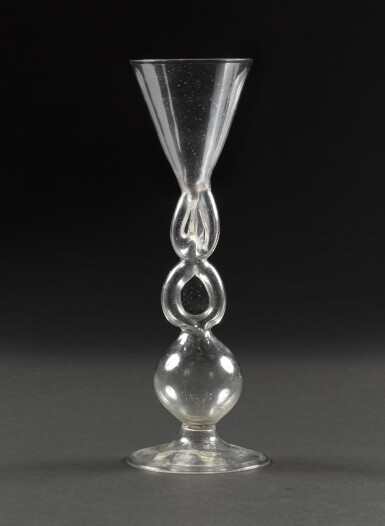


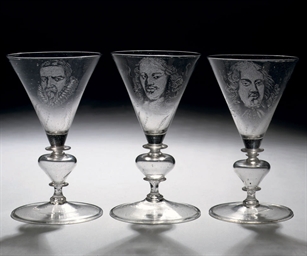
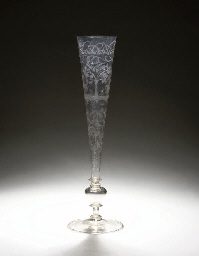
Try LotSearch and its premium features for 7 days - without any costs!
Be notified automatically about new items in upcoming auctions.
Create an alert